People flourish in healthy landscapes; conservation succeeds when local people benefit.
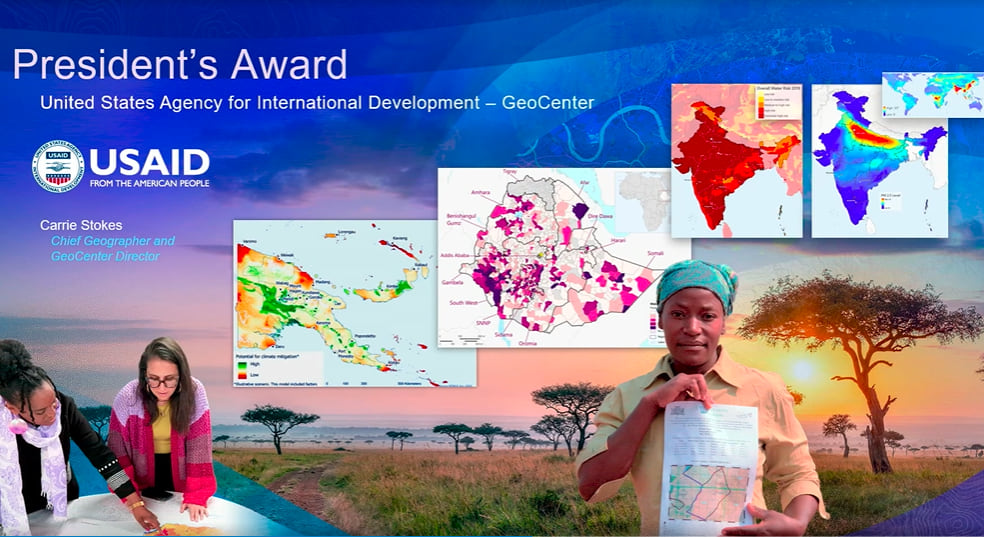
The U.S. Agency for International Development launched Health, Ecosystems, and Agriculture for Resilient, Thriving Societies (HEARTH), an innovative global public-private partnership program, in December of 2019. The program embodies the objectives of USAID’s policies and goals on Biodiversity Conservation, Climate Change, Private Sector Engagement, Indigenous Peoples, Resilience, Food Security, and Global Health.
The HEARTH program currently supports 17 projects in 12 countries: Angola, Bangladesh, Côte d’Ivoire, Democratic Republic of Congo, Ethiopia, Ghana, Indonesia, Kenya, Madagascar, Papua New Guinea, Peru, and Zambia. Each project’s goals vary, but most include at least two partners — including private sector firms and non-governmental organizations — to plan, manage, and track outcomes. And success of each project and the HEARTH program overall hinges on strong communication among all collaborators and the public. A Steering Committee of cross-disciplinary experts at USAID headquarters supports the projects which are funded and run out of USAID’s missions around the world.
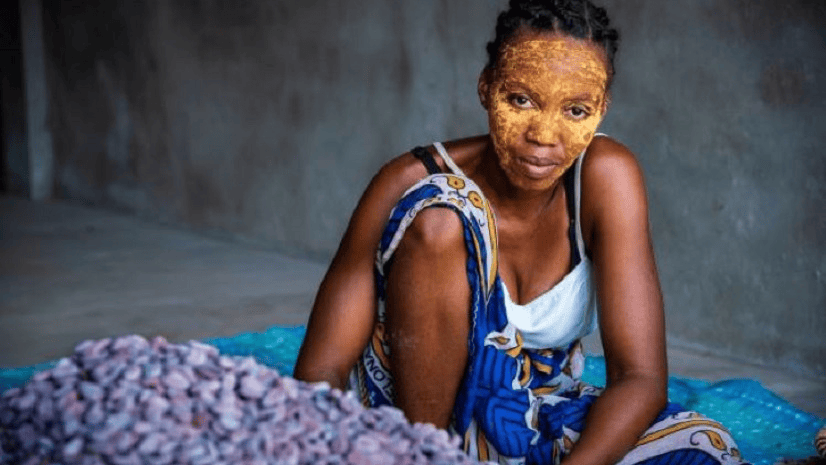
The StoryMaps team recently chatted with four USAID HEARTH team members. Get their take on the power of collaboration and communication, and the role of ArcGIS StoryMaps in their strategy. The following conversation has been edited for brevity and clarity.
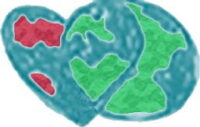
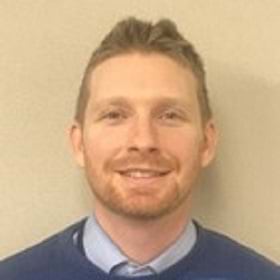
The well-being of people and the planet are interdependent, now more than ever.
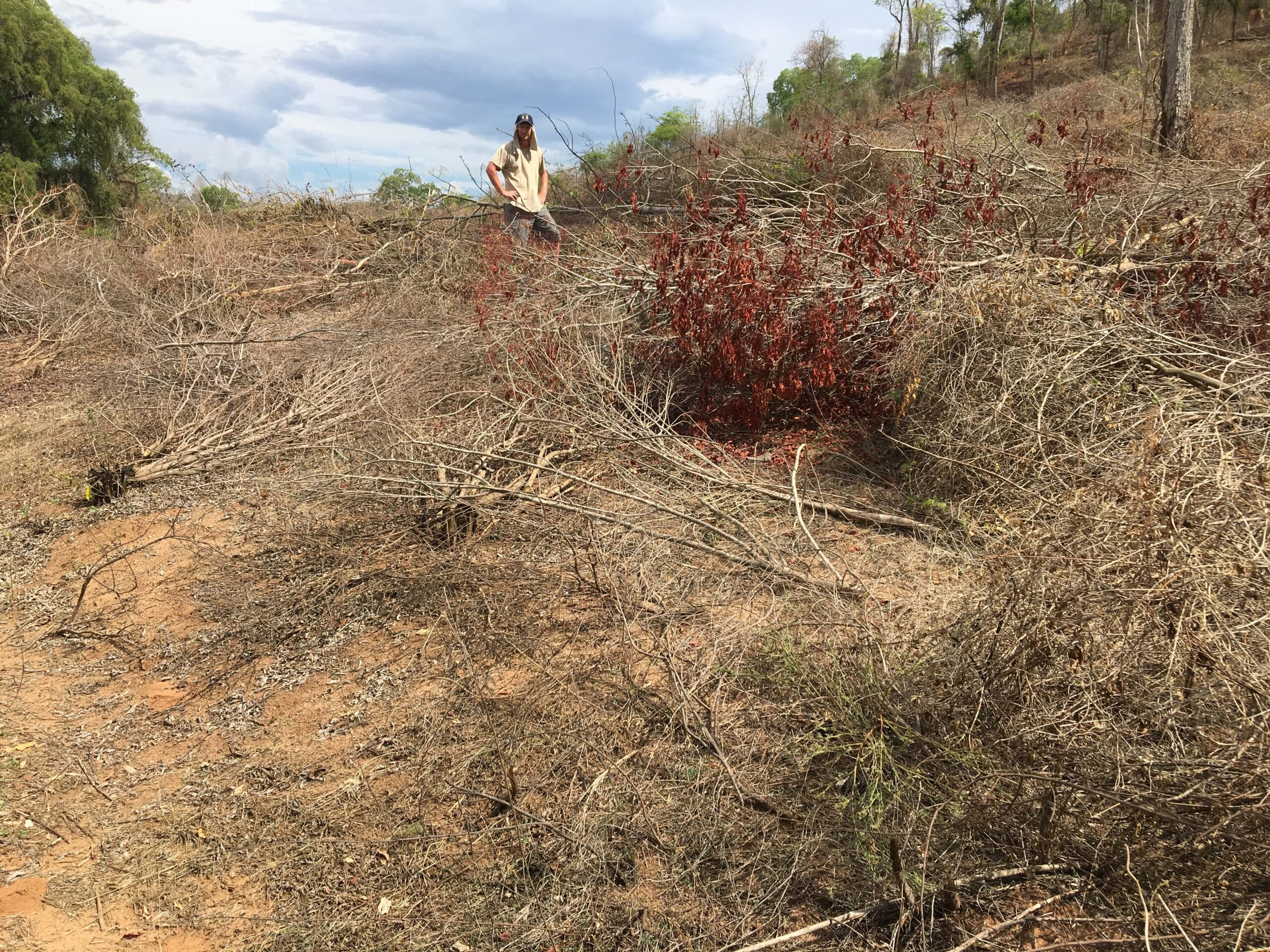
Even before COVID, our world was facing an increasing number of new diseases that emerged from biodiverse landscapes under unprecedented pressure (Ebola is my biggest area of interest).
In 2017, I visited Madagascar to help with their outbreak of pneumonic plague. Pneumonic plague, caused by the same bacteria as the Black Death in the Middle Ages, is most often contracted by flea bites and occasionally through coughing. And it’s nearly 100% fatal if not treated in the first 24 hours. The health system in Madagascar was strained heavily during this plague outbreak.
I was stunned to discover that Madagascar has more cases of plague today than any other country on Earth. They have a “plague season” every year. The suspected cause? A widespread agricultural slash-and-burn occurs every fall, causing bacteria-carrying rats to flee into villages. The practice endangers people and increases the threat of extinction of many species of lemurs and other endangered wildlife.
Partnering with private companies to halt or address this and other unsustainable agricultural practices presents a win-win-win opportunity — for human well-being, biodiversity, and economic growth.

That’s why I, as a preventive medicine physician, joined and co-lead the USAID’s HEARTH interdisciplinary steering committee. I am so proud that HEARTH has three partnerships in Madagascar, and fourteen others, to reduce environmental decline. And I’m further proud of the data we are collecting, including through geospatial analysis, to monitor progress.
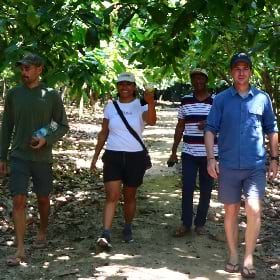
Successful partnerships are the product of deeply shared goals, regular, meaningful communication, and recognition of the unique value added by each partner.
Thriving and Sustainable Investments for Land Restoration and Economic Opportunity (TSIRO), a HEARTH project in Madagascar, a biodiversity hotspot, promotes environmentally-sound cultivation practices such as agroforestry. Over the next five years, the TSIRO Alliance will provide more than 2,000 Malagasy cacao and spice farmers with training and plant more than 1.5 million trees.
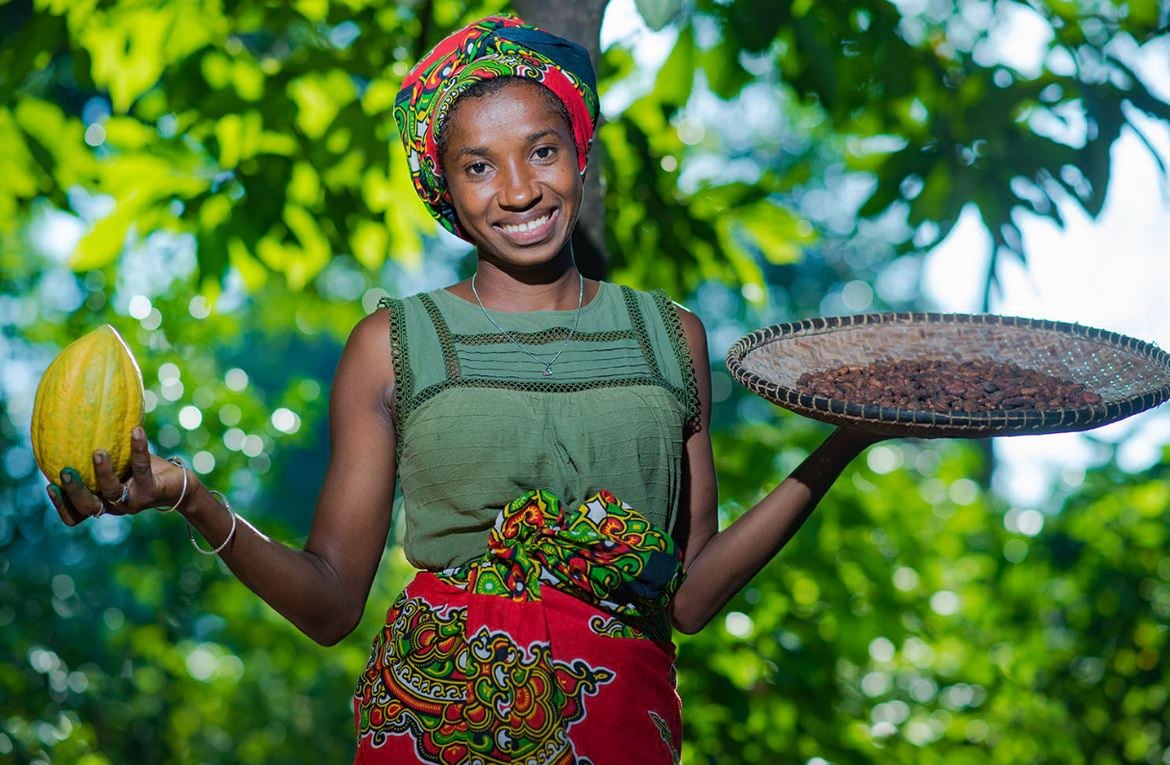
The success of TSIRO, which means “flavor” in Malagasy, comes down to the strong partnerships that existed among organizations prior to the HEARTH award and growth since. USAID partners include local communities, Beyond Good, Catholic Relief Services, Guittard Chocolate Company, Sahanala, Akesson’s organic, Fine Chocolate Industry Association, and Heirloom Cacao Preservation Fund.
As the Senior Biodiversity Specialist for the USAID/Madagascar mission and TSIRO lead, co-designing and managing the program has been an opportunity for me to learn the language, values, and perspectives of our private sector partners while sharing the livelihoods development and conservation perspective of USAID.
Managing healthy partnerships can be tricky, but the key, for us, has really been our regular communication with all major private sector and non-governmental partners. We discuss challenges and successes monthly from a technical and communication lens and with geospatial data. The discussions result in a diverse array of well-received communications products that span the development and fine cacao media landscape.
A side benefit of the project, our private sector partners learn more about the communities we work in and the challenges they face, such as the devastating effects of frequent cyclones. Our partner Catholic Relief Services provides anecdotal reports that farmers’ crops within agroforestry sites weather cyclones far better than those not utilizing an agroforestry model. These and similar outcomes have a very positive and motivating impact on the entire TSIRO team.
Read more about the TSIRO project in the recent article, How Chocolate Stimulates Taste Buds, Forests, and Communities.
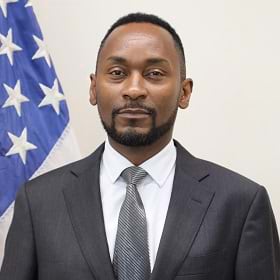
Integrating regenerative agriculture practices with biodiversity conservation is not only a strategy for resilience; it’s a blueprint for a prosperous future for communities and ecosystems
HEARTH partnerships globally support a “One Health” approach through diverse and climate-resilient crops and sustainable agricultural practices like crop rotations, integrated pest management, intercropping, integrated livestock and crop systems, improved irrigation methods, etc. The environmentally friendly practices support both biodiversity and ecosystem services.
Those partnerships — a collaboration of private sector entities, local governments, and non-governmental organizations — are most successful when they engage local farmers and community members. And clear communication across organizations requires consistent assessment, planning, and monitoring.
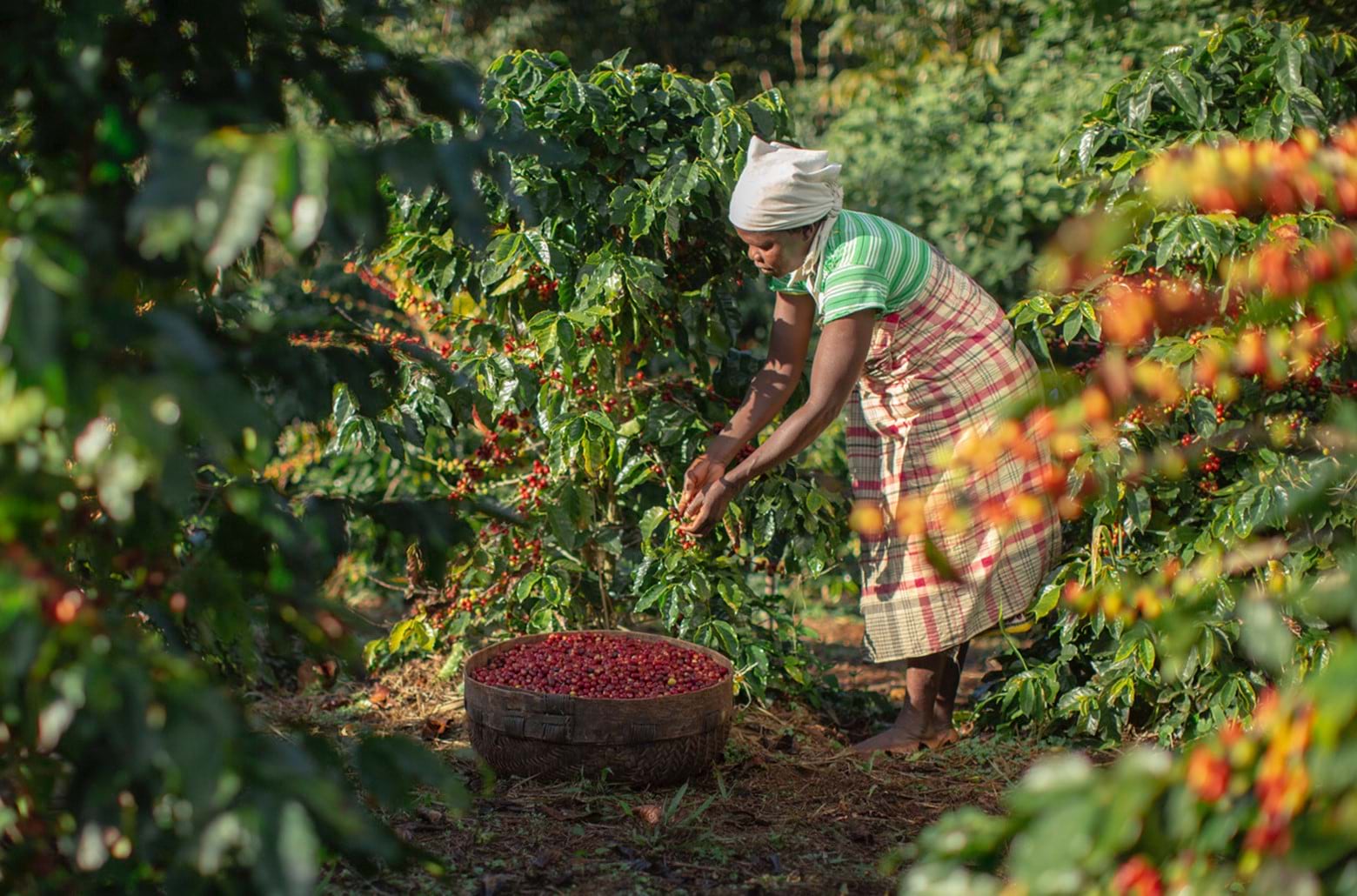
After working with local HEARTH partnerships, I have a few pieces of advice. Find a sustainable equilibrium between agricultural development and environmental conservation. Understand you need flexible approaches based on unpredictable climate patterns. Carefully consider limited financial, technical, and human resources when planning sustainable agriculture and conservation initiatives. Document your outcomes and make decisions based on data. And ensure you have active participation and buy-in from local communities, who may be resistant to changing traditional agricultural practices.
Digitial communication tools, like ArcGIS StoryMaps, offer a streamlined way to engage communities and highlight successes across communities and countries.
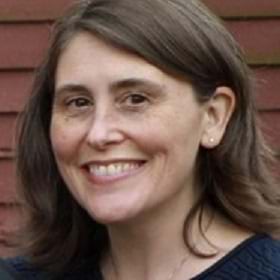
Collaboration can be tricky. People who work in different sectors may use the same word to mean different things, or different words to mean the same thing. Taking the time to understand each other brings huge benefits and bigger impacts.
The HEARTH team brings together experts in many fields including biodiversity conservation, climate change, health, and agriculture. I appreciate that we each bring our expertise to address overlapping challenges. On that team, I lead our communication efforts and serve as a Biodiversity Advisor.
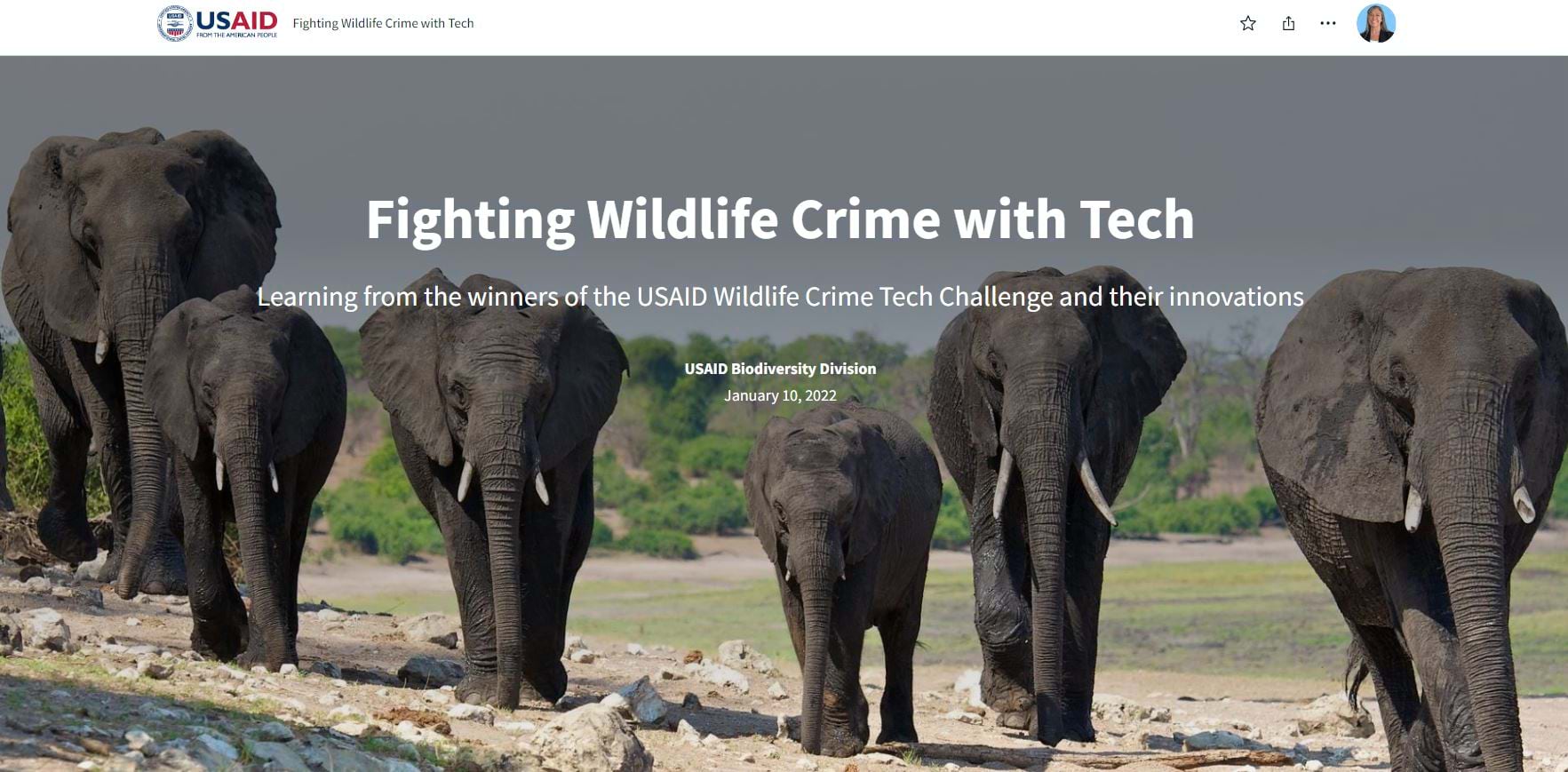
To better share the HEARTH portfolio broadly, we needed a user-friendly tool that could both show the global reach of the 17 HEARTH projects globally as well as dive into each project.
A few years ago, I used the ArcGIS StoryMaps platform to showcase Fighting Wildlife Crime with Tech, a USAID project focused using technology to combat wildlife trafficking. In that story, we featured the 15 winners of the Wildlife Crime Tech Challenge, and the progress they had made on their solutions since 2016. The platform allowed us to pull together a single story, yet show the individual challenges, achievements, and progress the Tech Challenge winners had made over five years.
A story, created with ArcGIS StoryMaps, met the same needs for the HEARTH projects. The Transformative Partnerships for People and the Planet story begins with a high-level overview of the HEARTH program and then a global map of projects for context.
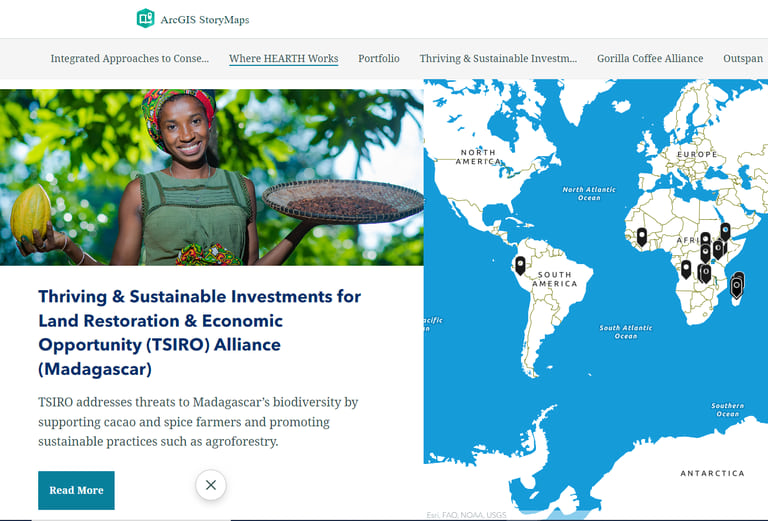
A description of each project follows using the platform’s “sidecar” immersive block — with a title, partners, description, and important links.
The first HEARTH project started in July 2021, and the most recent one in late 2023, so each project hits key milestones at different times. Each one works in a different landscape and has different partners. The ArcGIS StoryMaps platform allowed us to build the story structure around the basic program information and a photo. As content becomes available from partners, we add videos, data, article links, reports, and more to each project individually. The strong structure but flexible platform gives us one place to pull our content together, and one link to easily share.
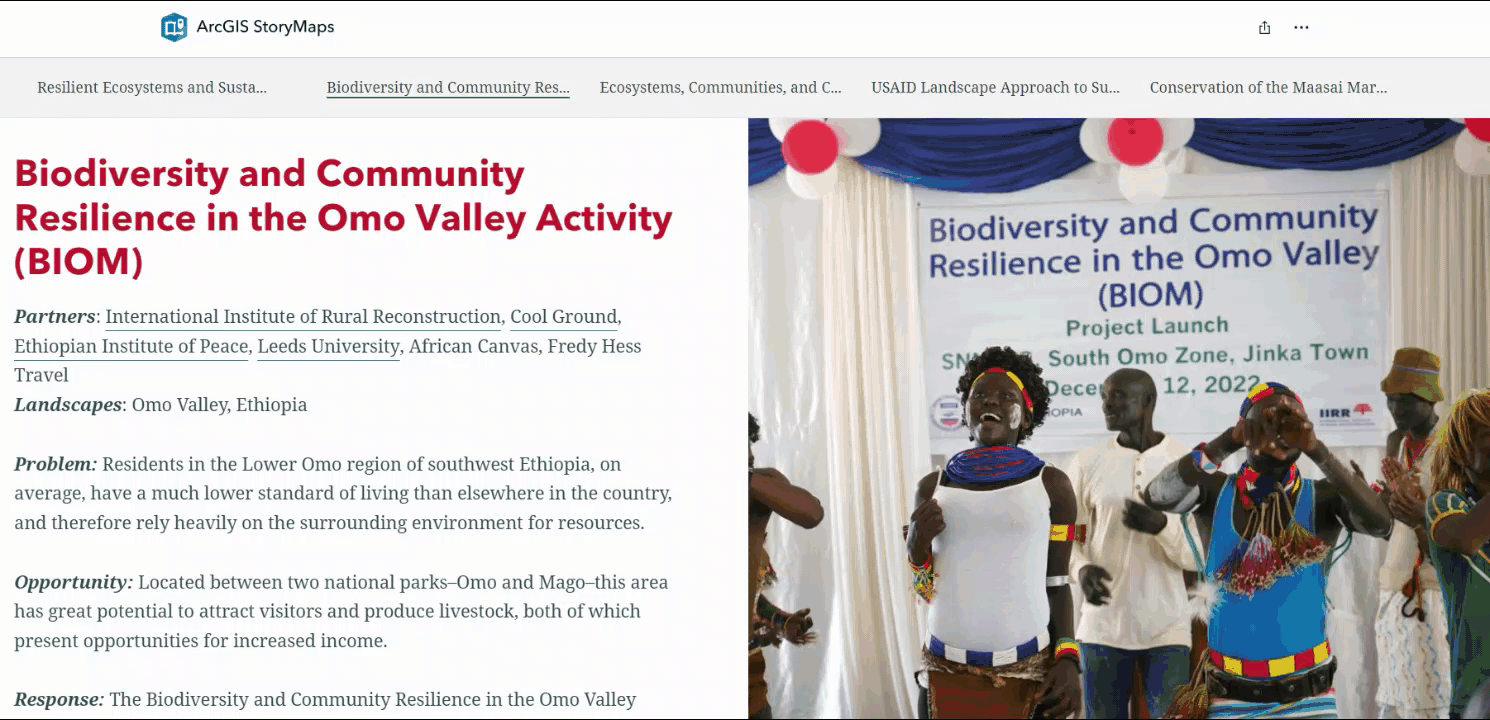
The USAID HEARTH team looks forward to building upon our story. Recent additions to the story include new videos from Madagascar and Indonesia as well as links to blog posts on several projects. As more projects reach their mid-point, the team will add key data indicators to project entries in a visually engaging way.
As a long-term goal, the USAID HEARTH team and partners will co-create data-driven stories to share our results and lessons from our monitoring, evidence, research, and learning efforts.

This featured storyteller interview was prepared as a part of the August 2024 Issue of StoryScape | Agriculture by the numbers — and beyond.
For more interviews and articles like this one, be sure to check out StoryScape℠, a monthly digital magazine for ArcGIS StoryMaps that explores the world of place-based storytelling — with a new theme every issue.
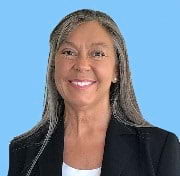
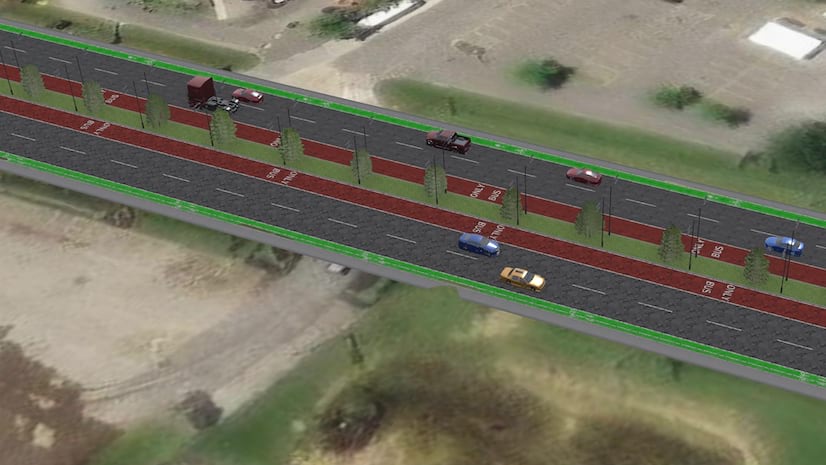

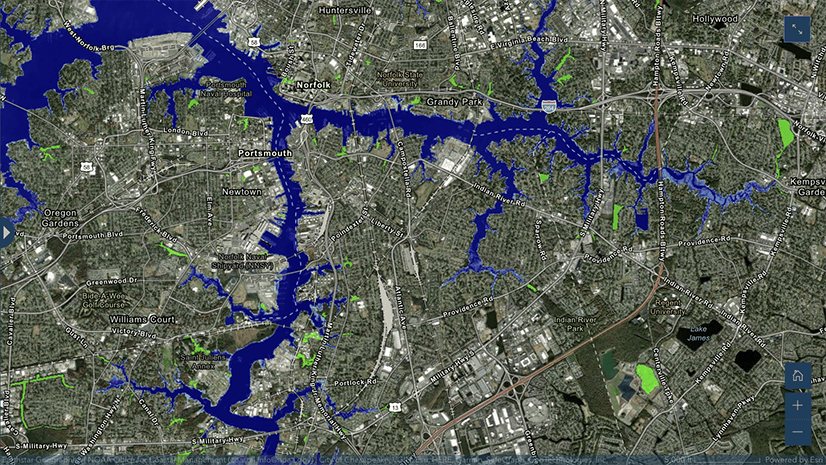
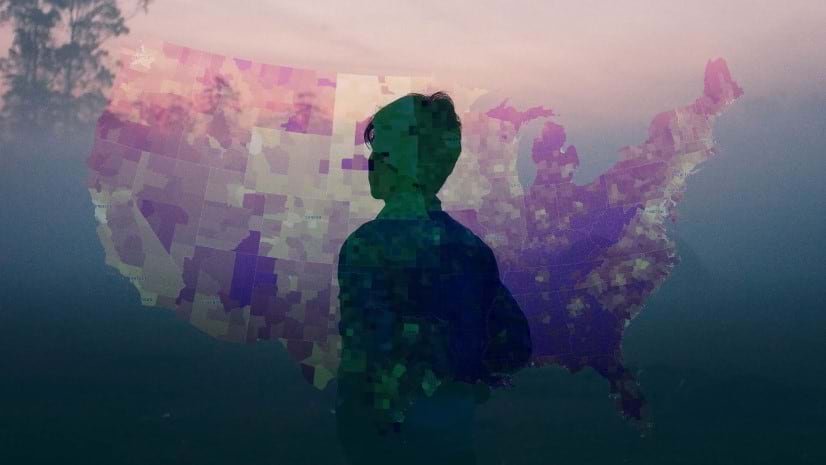
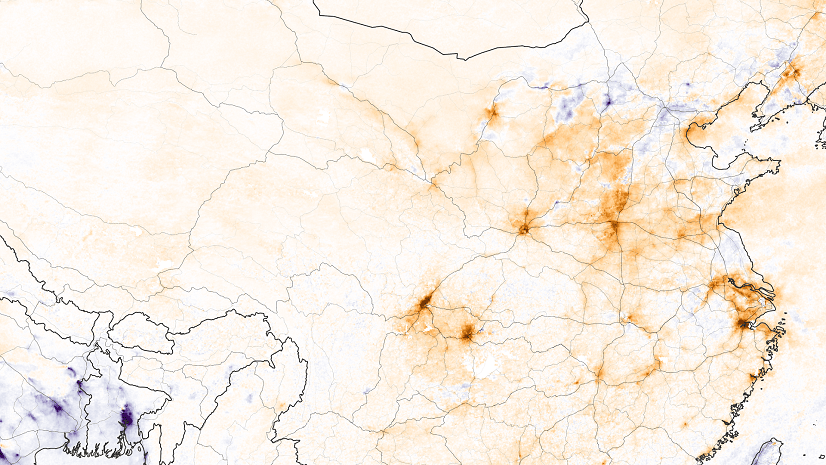
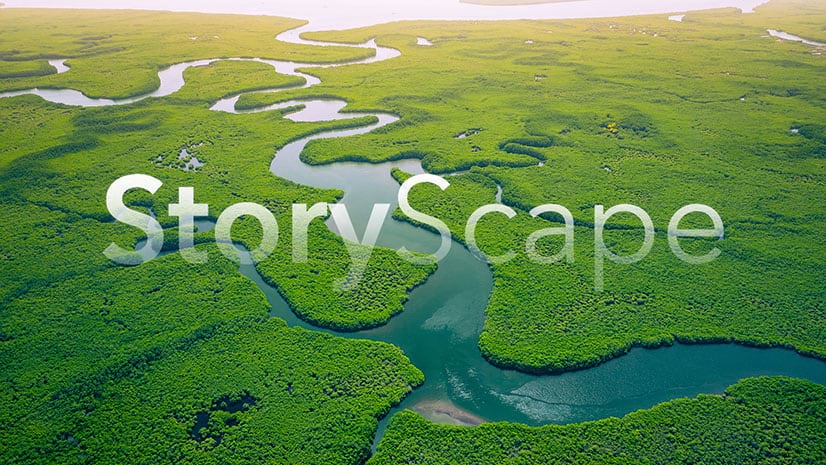
Article Discussion: